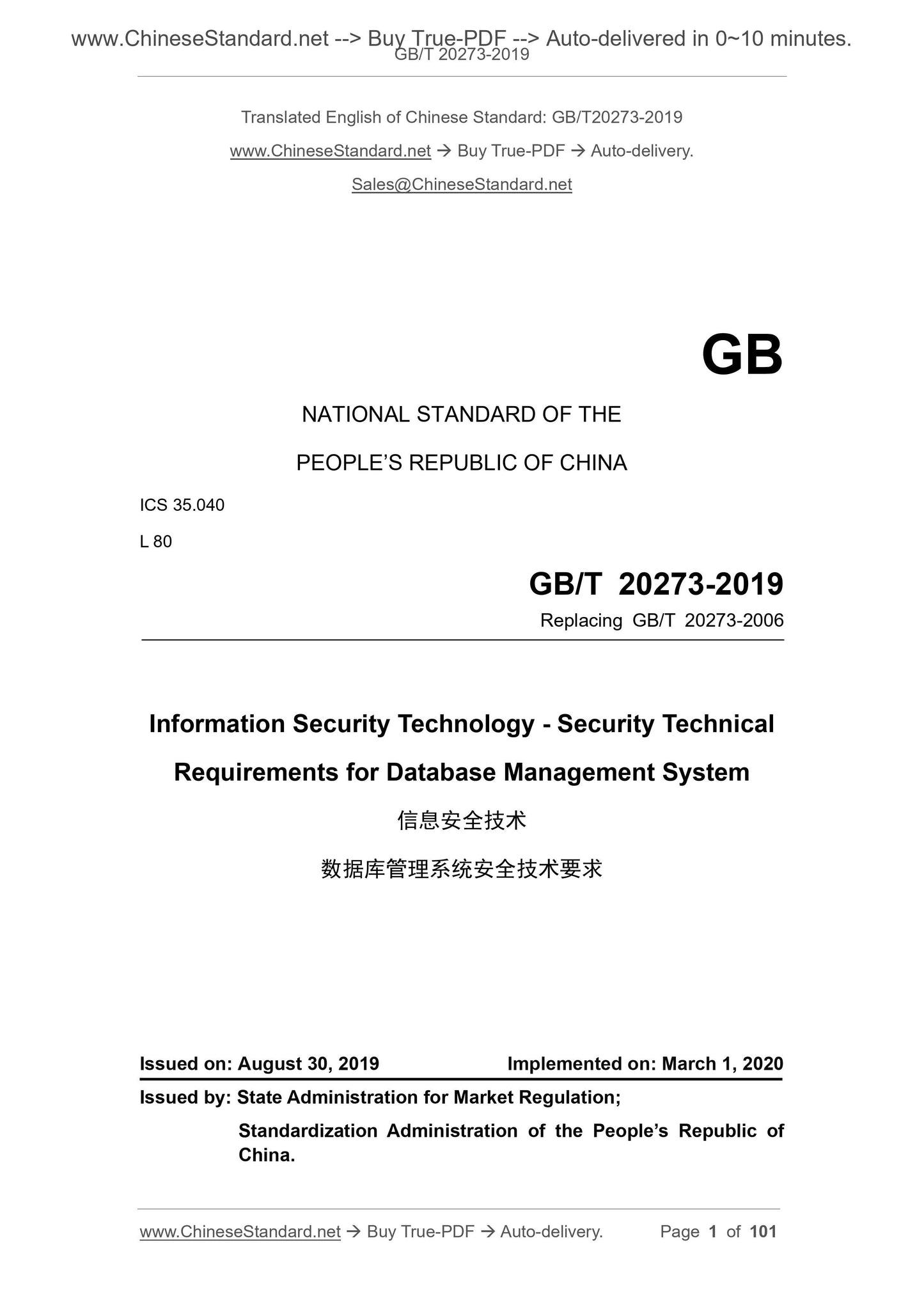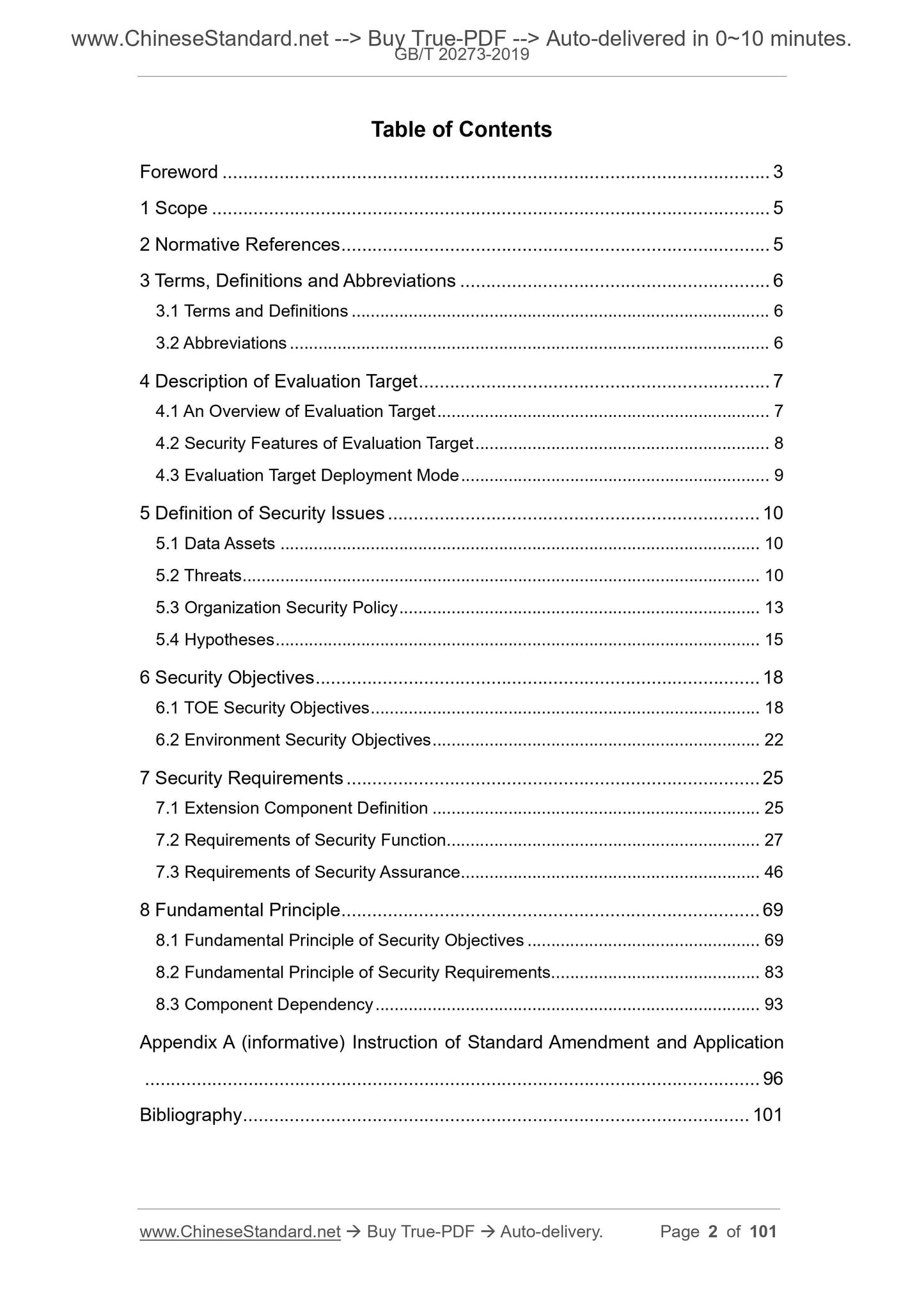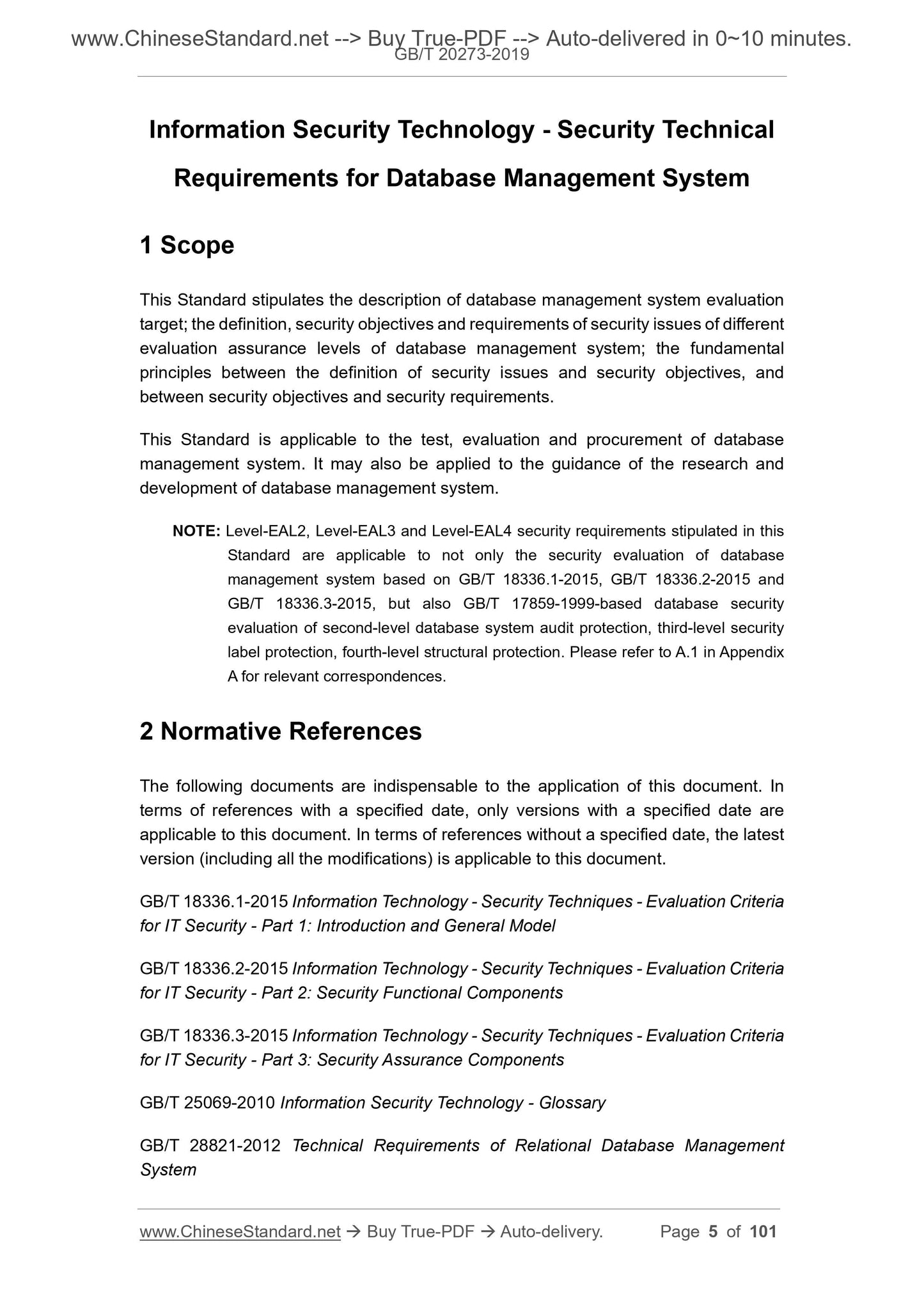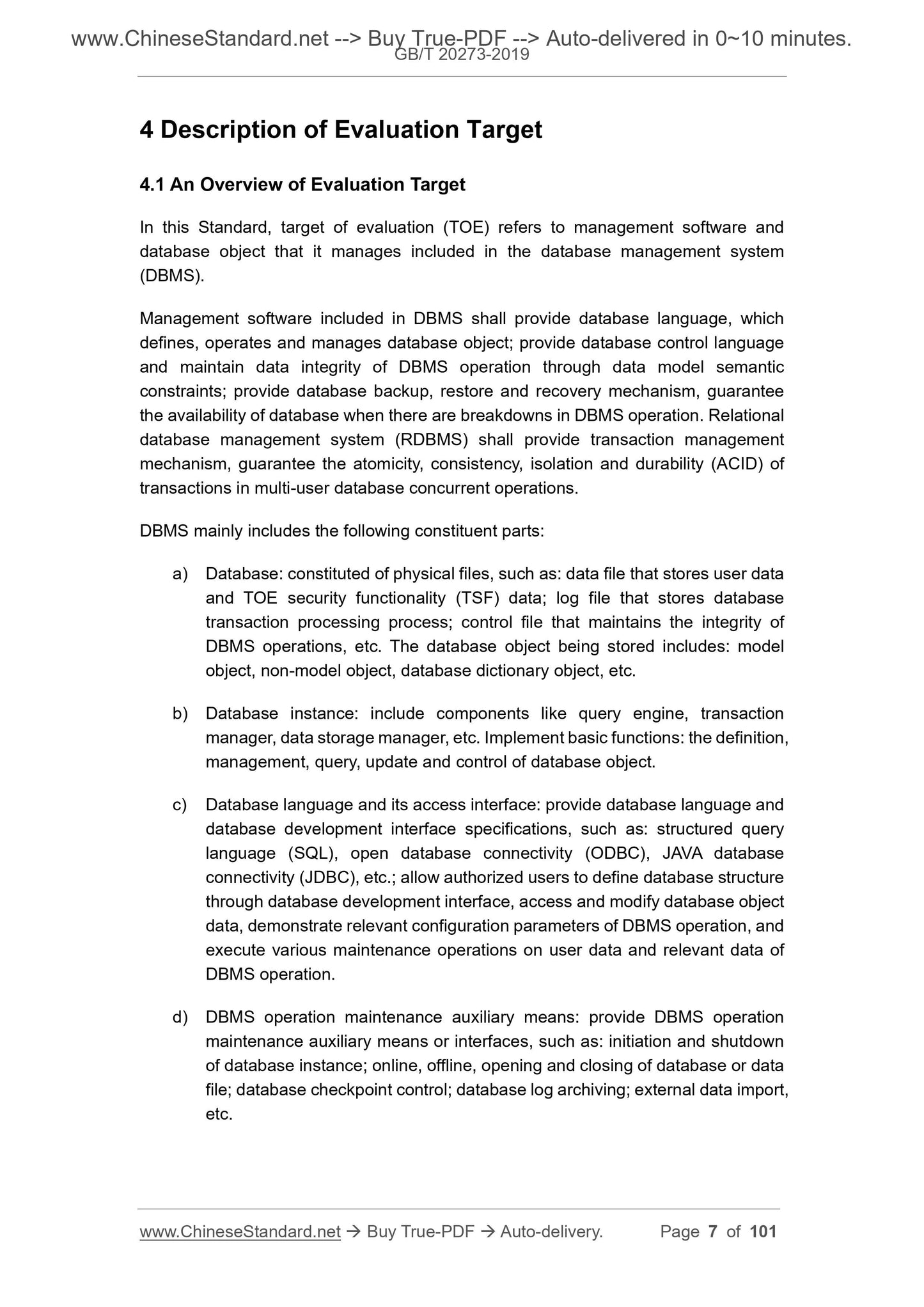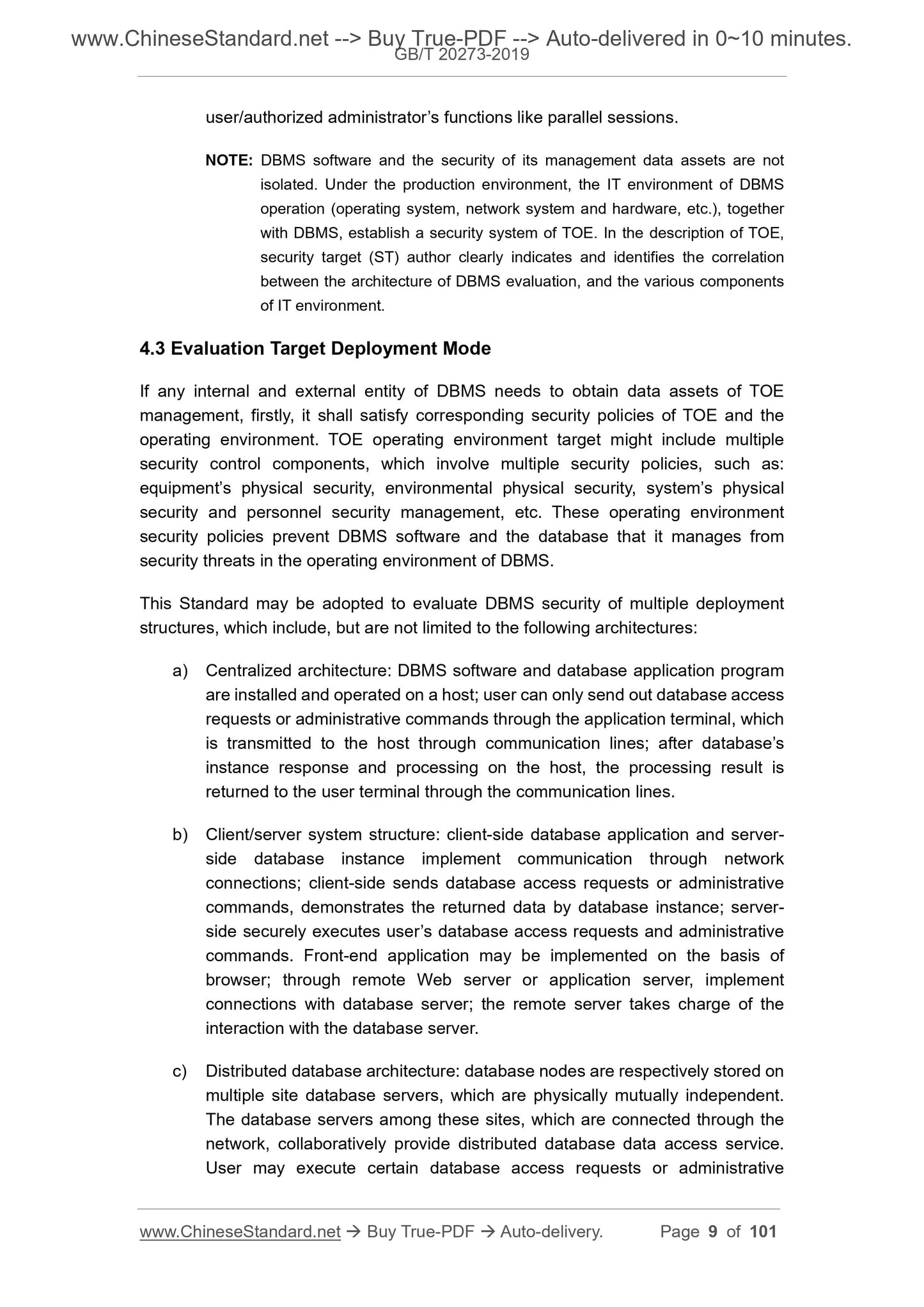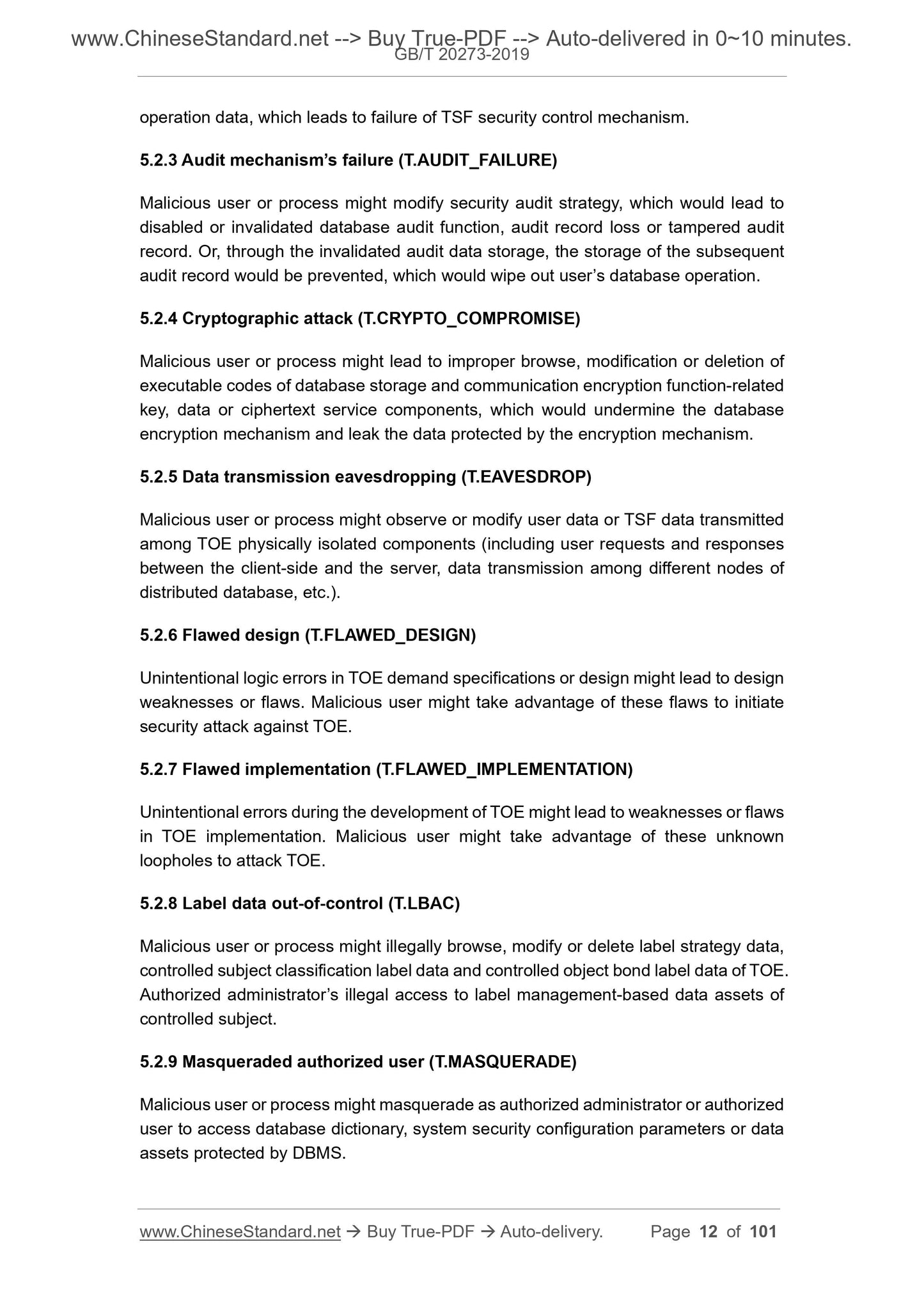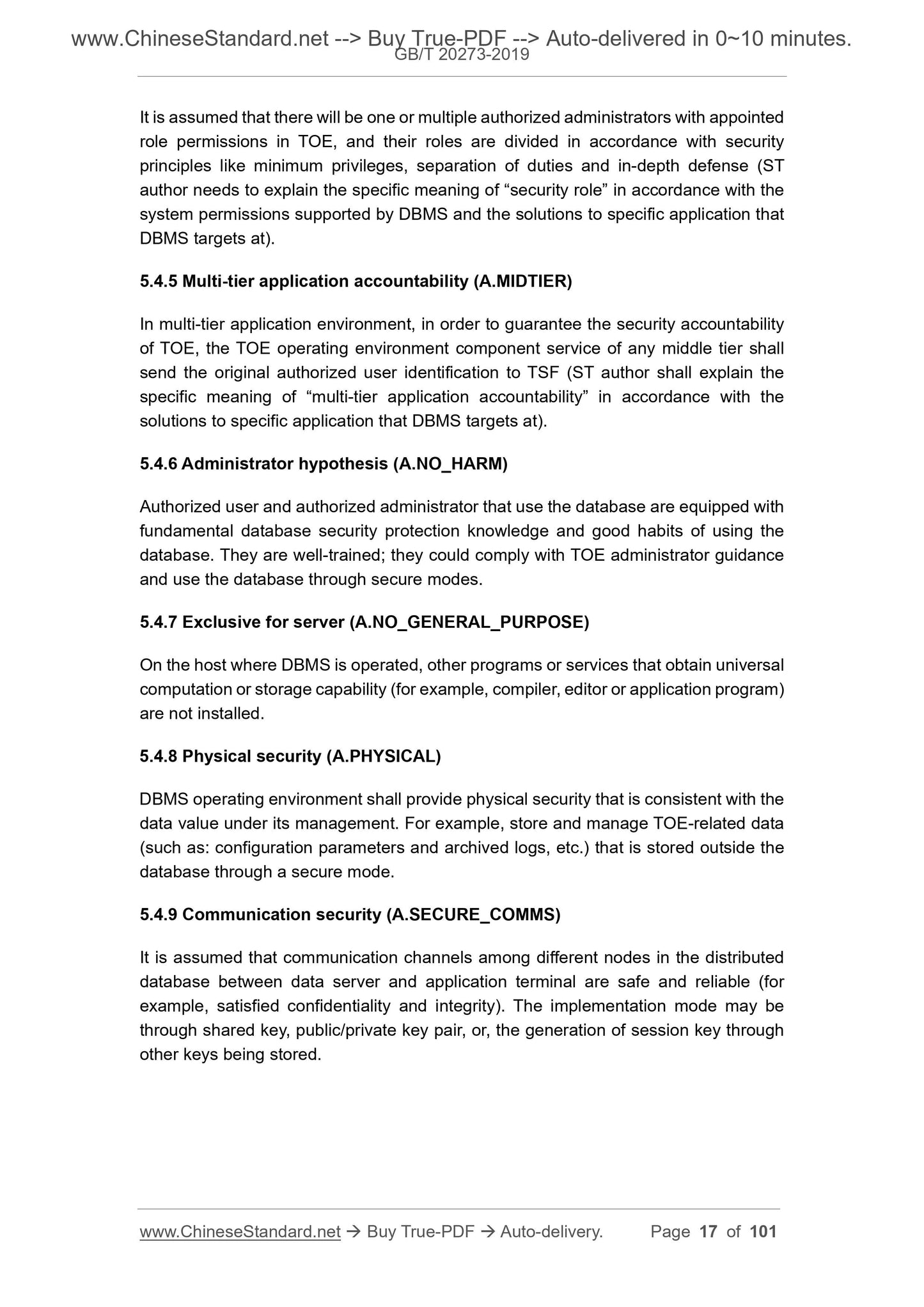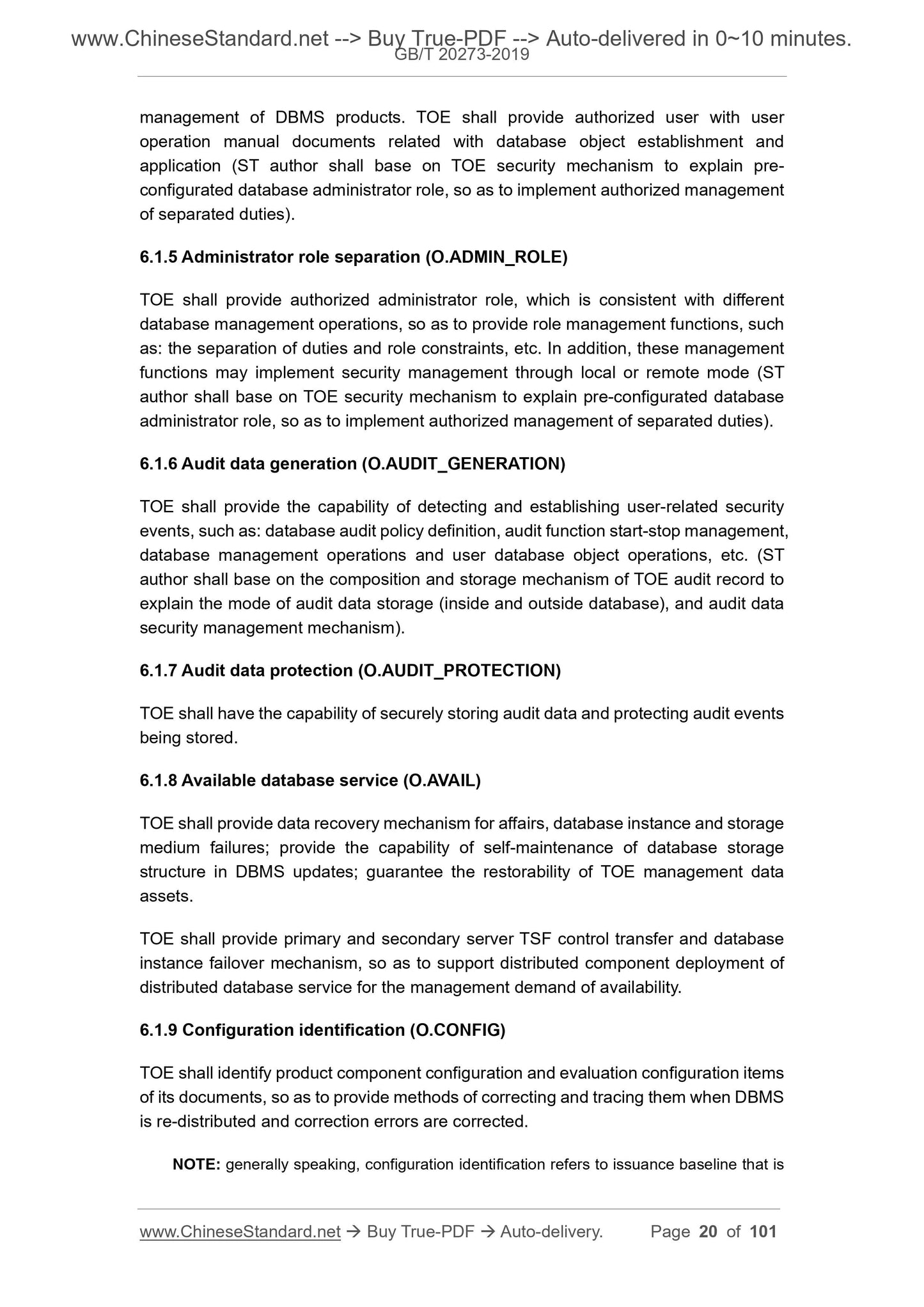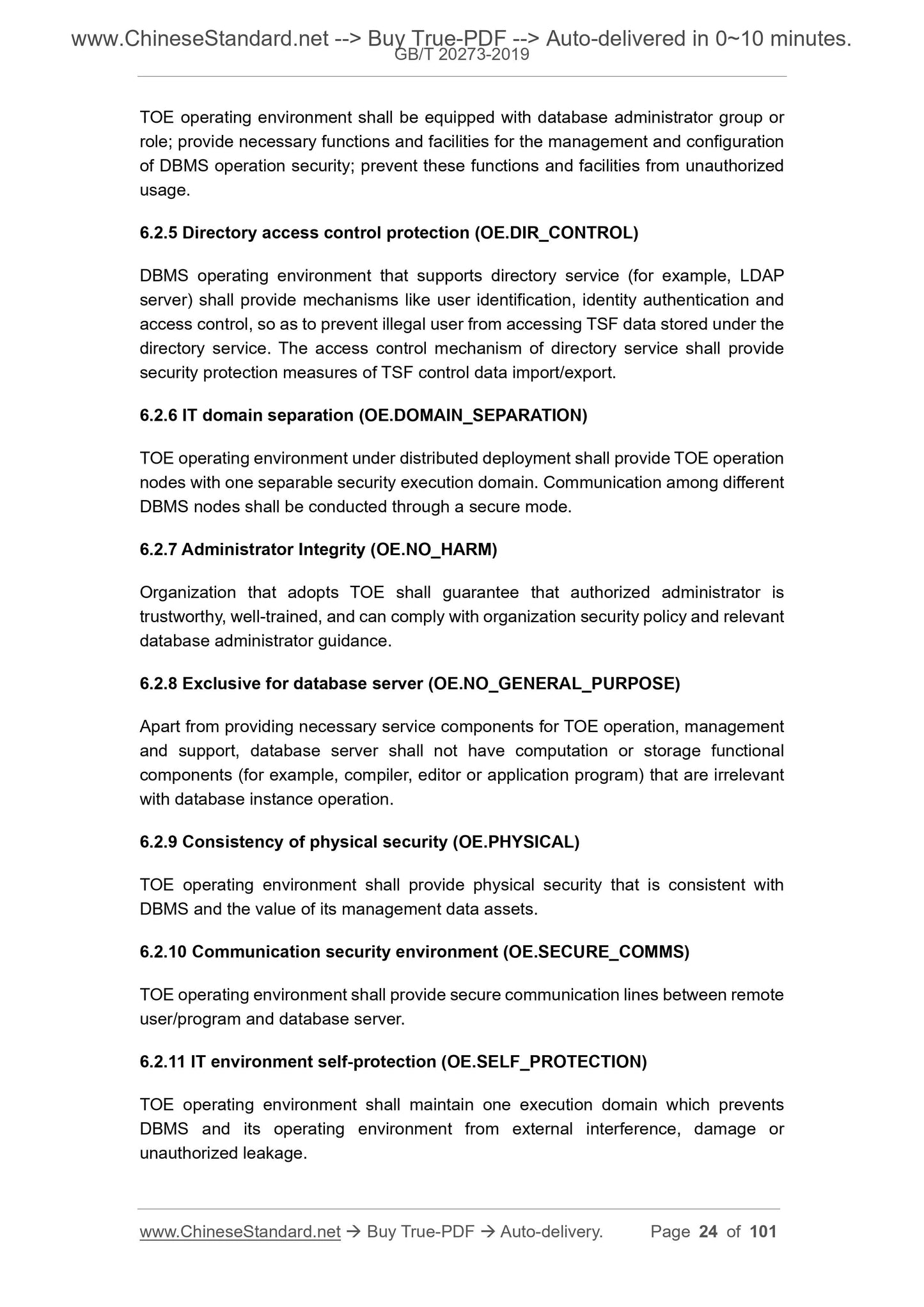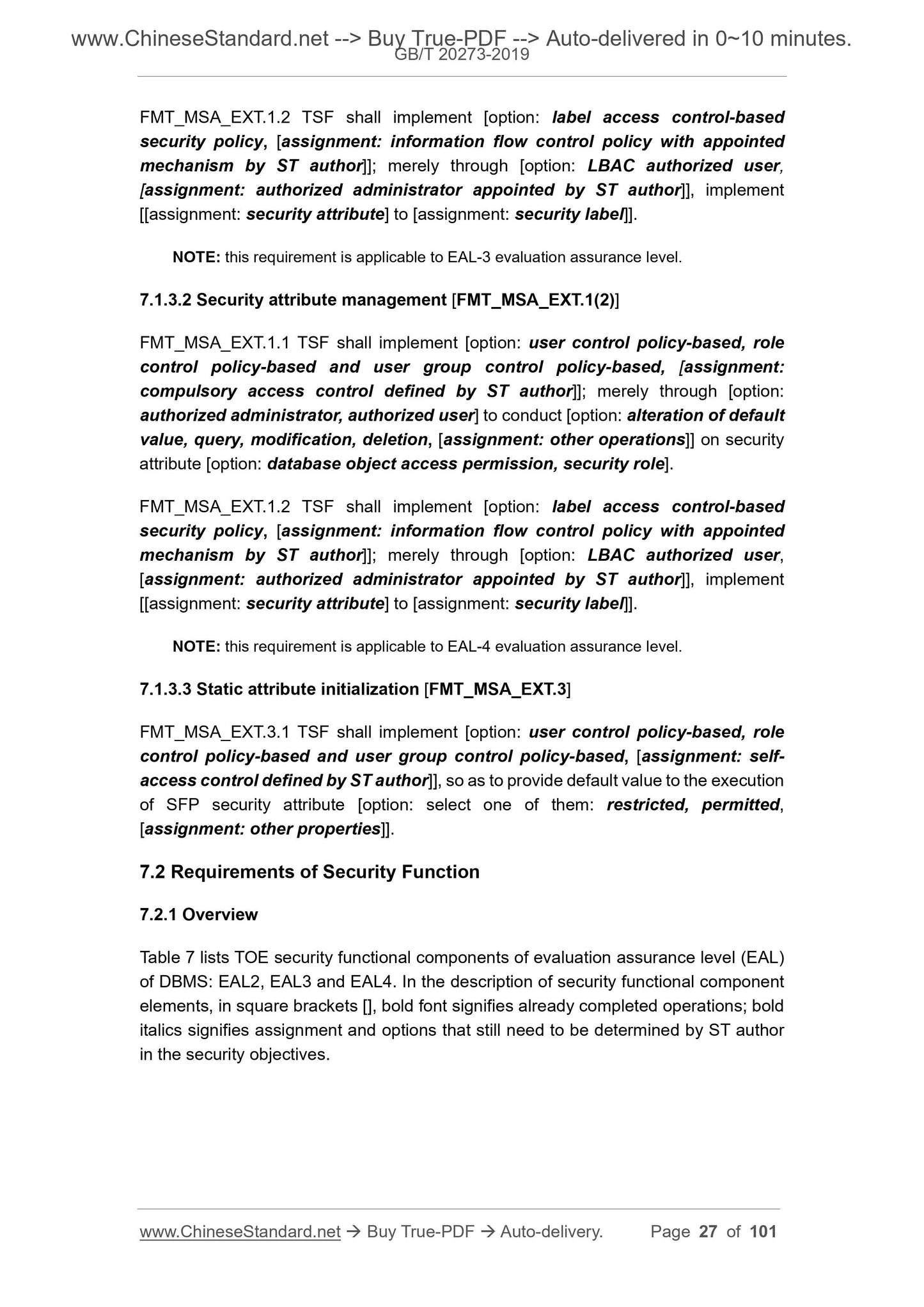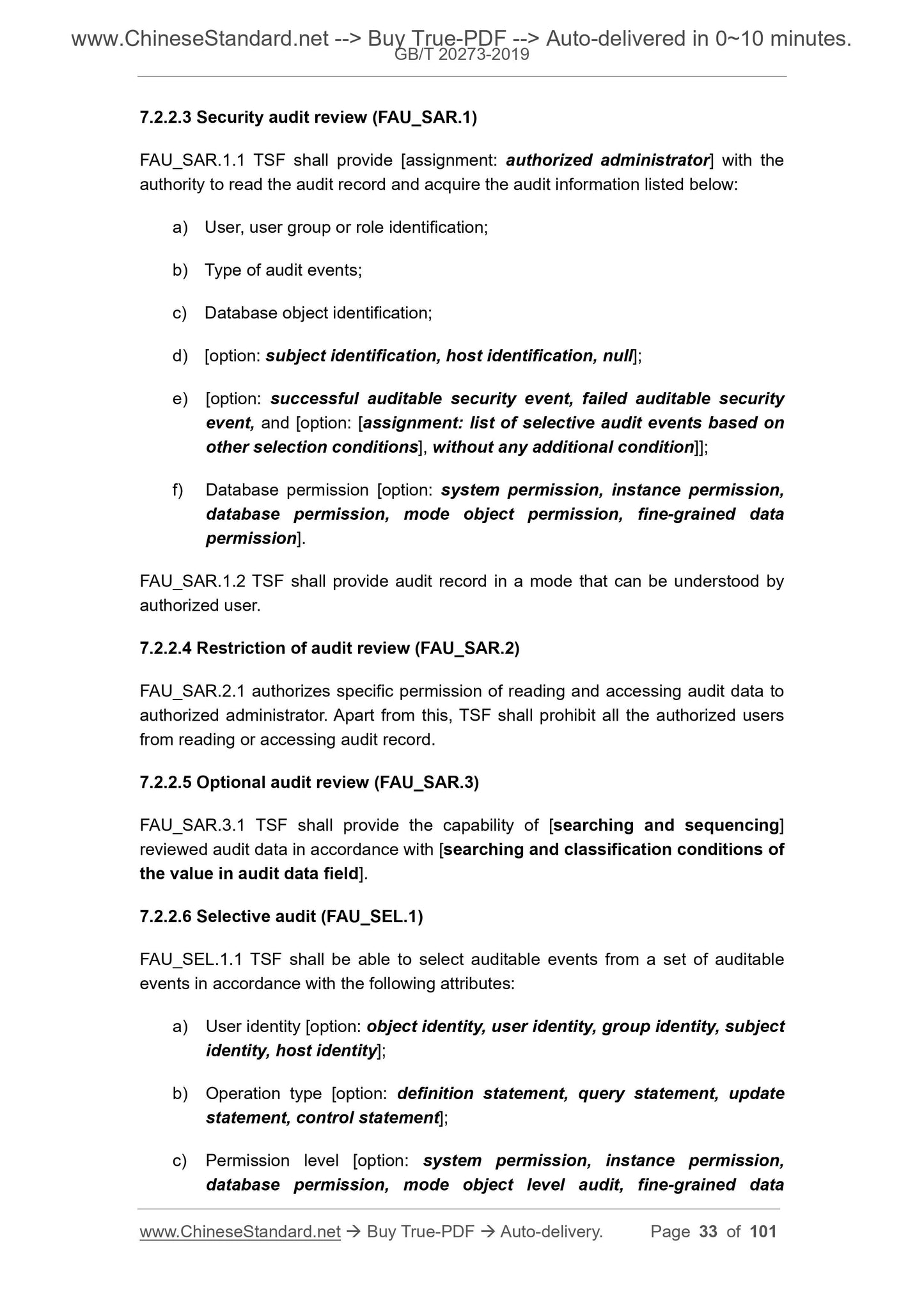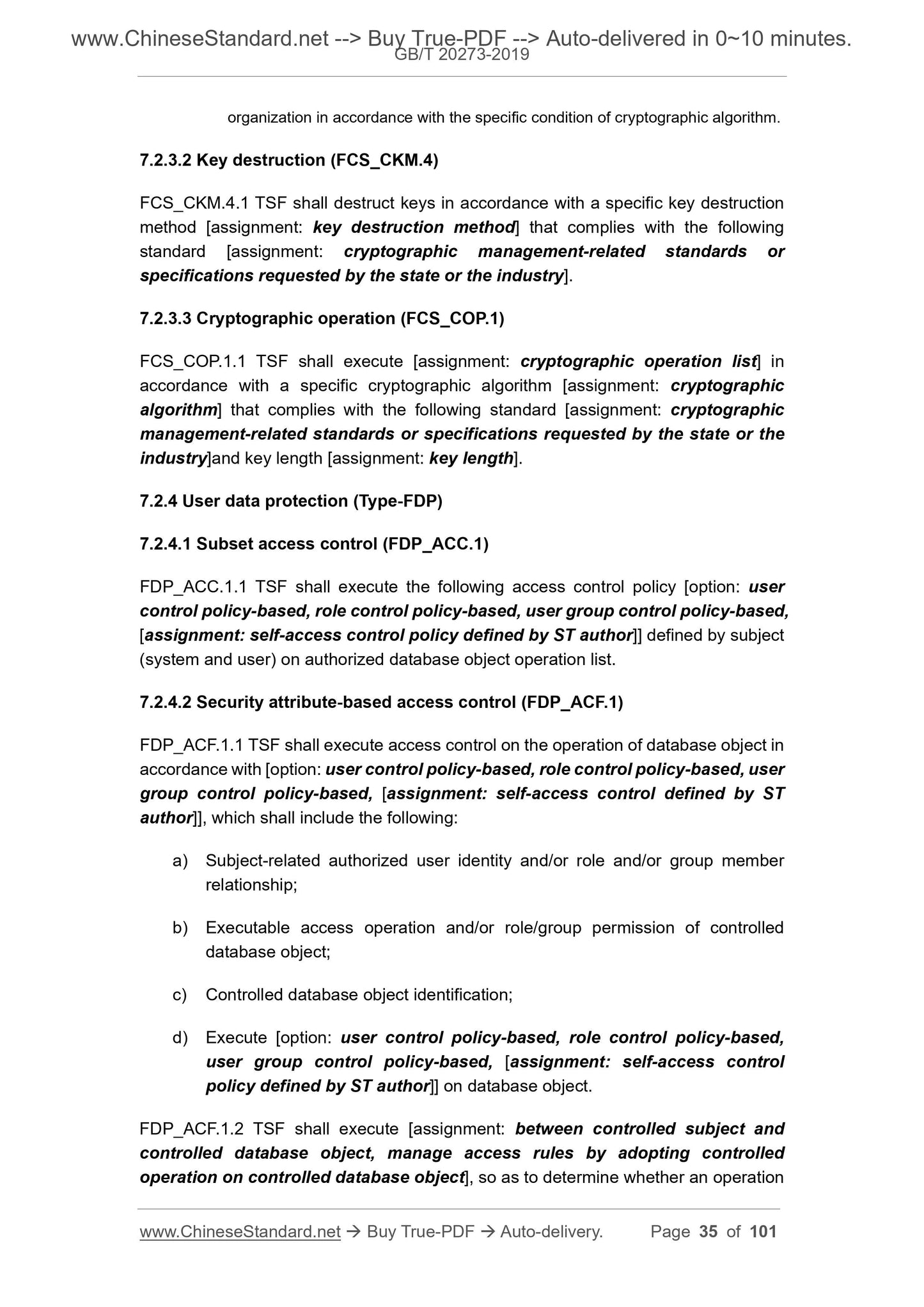1
/
of
12
www.ChineseStandard.us -- Field Test Asia Pte. Ltd.
GB/T 20273-2019 English PDF (GB/T20273-2019)
GB/T 20273-2019 English PDF (GB/T20273-2019)
Regular price
$610.00
Regular price
Sale price
$610.00
Unit price
/
per
Shipping calculated at checkout.
Couldn't load pickup availability
GB/T 20273-2019: Information Security Technology - Security Technical Requirements for Database Management System
Delivery: 9 seconds. Download (and Email) true-PDF + Invoice.Get Quotation: Click GB/T 20273-2019 (Self-service in 1-minute)
Newer / historical versions: GB/T 20273-2019
Preview True-PDF
Scope
This Standard stipulates the description of database management system evaluationtarget; the definition, security objectives and requirements of security issues of different
evaluation assurance levels of database management system; the fundamental
principles between the definition of security issues and security objectives, and
between security objectives and security requirements.
This Standard is applicable to the test, evaluation and procurement of database
management system. It may also be applied to the guidance of the research and
development of database management system.
NOTE. Level-EAL2, Level-EAL3 and Level-EAL4 security requirements stipulated in this
Standard are applicable to not only the security evaluation of database
management system based on GB/T 18336.1-2015, GB/T 18336.2-2015 and
GB/T 18336.3-2015, but also GB/T 17859-1999-based database security
evaluation of second-level database system audit protection, third-level security
label protection, fourth-level structural protection. Please refer to A.1 in Appendix
A for relevant correspondences.
Basic Data
| Standard ID | GB/T 20273-2019 (GB/T20273-2019) |
| Description (Translated English) | Information Security Technology - Security Technical Requirements for Database Management System |
| Sector / Industry | National Standard (Recommended) |
| Classification of Chinese Standard | L80 |
| Classification of International Standard | 35.040 |
| Word Count Estimation | 66,684 |
| Date of Issue | 2019-08-30 |
| Date of Implementation | 2020-03-01 |
| Older Standard (superseded by this standard) | GB/T 20273-2006 |
| Quoted Standard | GB/T 18336.1-2015; GB/T 18336.2-2015; GB/T 18336.3-2015; GB/T 25069-2010; GB/T 28821-2012 |
| Issuing agency(ies) | State Administration for Market Regulation, China National Standardization Administration |
| Summary | This standard specifies the description of database management system evaluation objects, the definition of security issues, security purposes and security requirements of database management systems with different assessment assurance levels, and the basic principles between the definition of security issues and security purposes, security purposes and security requirements. This standard applies to the testing, evaluation and procurement of database management systems, and can also be used to guide the research and development of database management systems. |
Share
